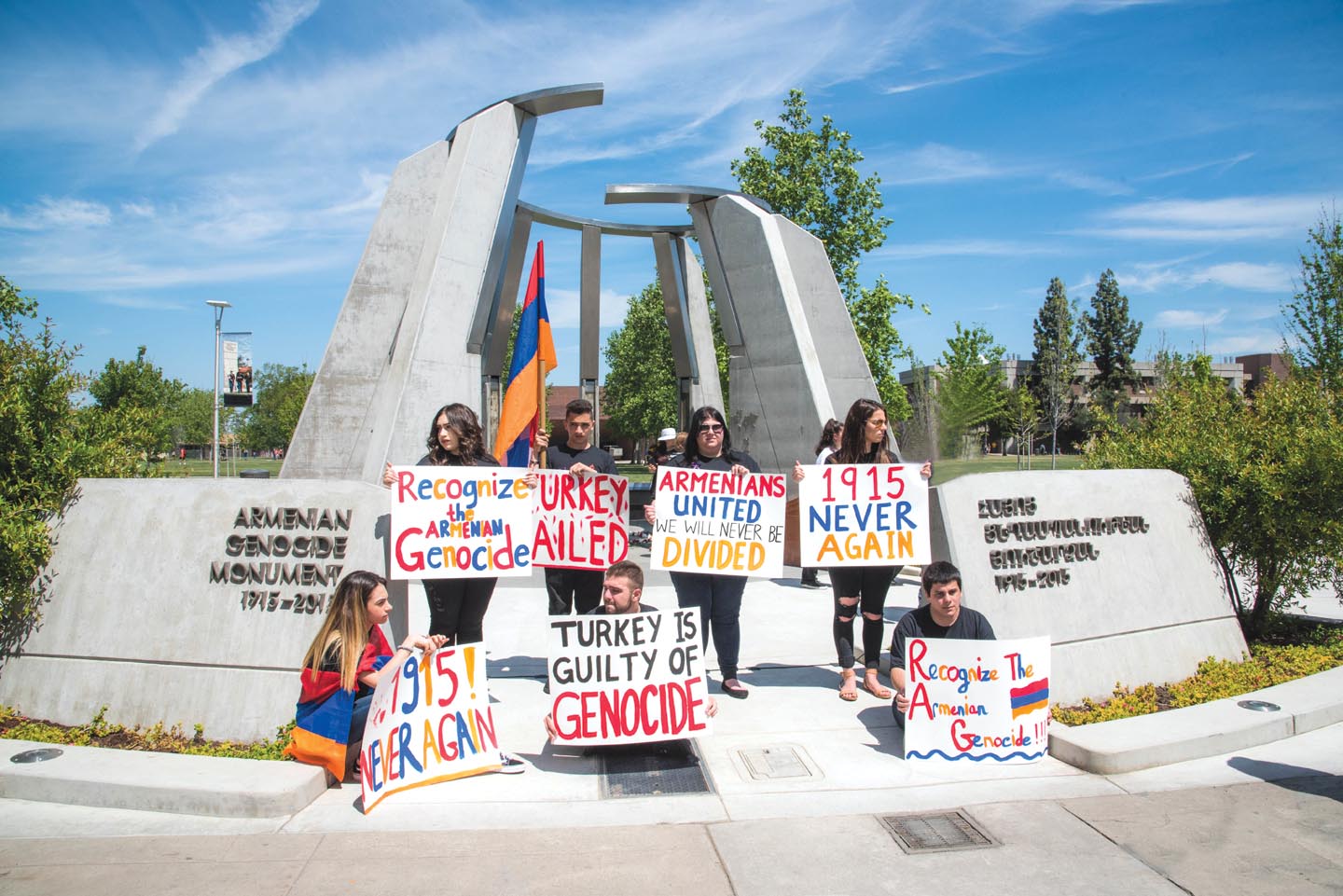
Tuesday, April 24. Photo: Hourig Attarian
Michael Rettig
Editor
Every year on April 24, the world watches from a distance as Armenians around the world march in the streets or gather at memorials to honor those who were killed. Every year, that distance seems to diminish, as high profile celebrities help to educate the world about the details surrounding the Genocide. Commemorative events are not only personal and intimate times of mourning for Armenians, but they demonstrate that the Genocide and its subsequent denial is still an important issue to Armenians, and humanity at large. It provides Armenians with the opportunity to educate their peers about what took place while commemorating their ancestors.
On Tuesday, April 24, the Armenian Students Organization (ASO) hosted its annual Armenian Martyrs Day commemoration at the Fresno State Armenian Genocide Monument. This year, Armenian Studies Coordinator, Professor Barlow Der Mugrdechian, organized an exhibit of posters with text and photographs to profile significant events from the Genocide. The posters were set up along the pathway leading to the Monument, where crowds of students and faculty stopped to read them as they walked across campus.
Exchange students from Armenia, Hos Harutyunyan and Erik Abrahamyan, helped set up the exhibit. “It is easier to see something once rather than to hear about it ten times,” explained Harutyunyan. “The Exhibit provided a good opportunity for both people who have heard about the Genocide as well as those who haven’t, to learn the history.”
Abrahamyan, whose great- grandfather survived the massacres in Van, felt that his involvement with the Exhibit honored those his family lost during the Genocide. “My great-
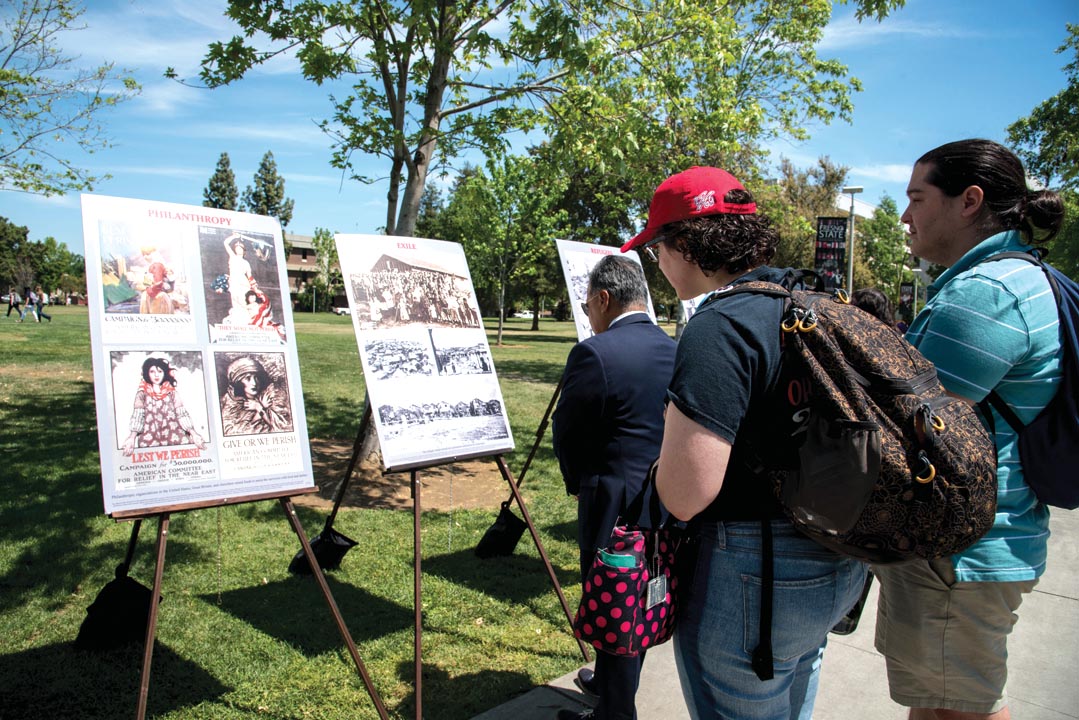
grandfather’s mother left his sister in a church so she could focus on protecting her sons, as the Turks were especially targeting males,” said Abrahamyan. “I feel like I have done something real for my great-grandfather’s sister, who was never found, in helping to educate my peers.” While people studied the Exhibit, ASO students staged a silent protest in front of the Armenian Genocide Monument, holding flags and signs decrying genocide denial.
The formal program began at noon as ASO student Suzanna Ekmekchyan sang the American and Armenian national anthems. The program included a poem ASO executives recited titled “To Remember is to Live” and a statement of support by the Associated Students Inc. representative, Evangelia Pappas (Senator, College of Arts & Humanities). ASO president Kara Statler gave opening comments highlighting the tenacity of the Armenian people.
“We have heard of countless atrocities starting in 1895, yet we are much more than victims of genocide, we are survivors,” said Statler. “We have thrived in countries all over the world with a diaspora dating back centuries. We have built churches and schools in almost every continent. We have thrived, and we have proven time and time again that not only will we not be silenced but that our voices will be heard.”
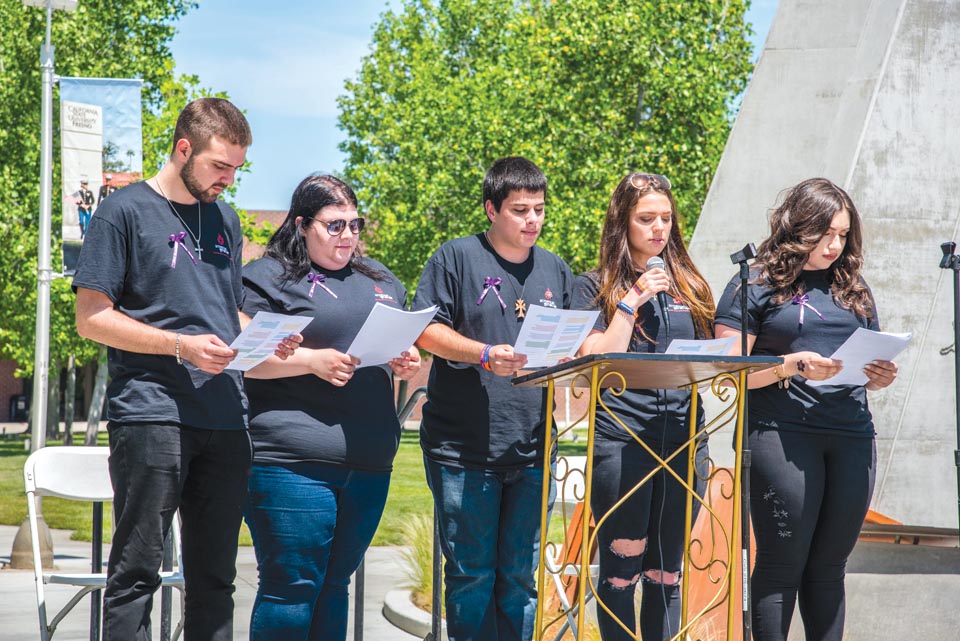
Statler then voiced her support for the peaceful protestors in Armenia who forced former President Serzh Sargsyan to resign after he was elected Prime Minister.
“While so much of our homeland was taken away from us, we must not let corruption ruin what’s left of it. We stand with our brothers and sisters in Armenia.”
Kazan Visiting Professor Dr. Yektan Türkyılmaz delivered the keynote address, stressing the long-lasting effects genocides have on victim

groups. “Genocides are not single events, they are processes,” Dr. Türkyilmaz explained. “They do not simply occur and then stop.” He noted that denial accentuates this continuity and ensures that victim groups are repeatedly targeted. “The Genocide continues in violence against Armenians, Assyrians, Yezidis, and the Kurds in Afrin. It is our duty to call on governments to urge the Turkish state to put an end to their continued aggressive discriminatory policies.”
At the conclusion of the program, those in attendance placed carnations in the center of the Monument to the melancholy drone of the duduk. The ceremony was both an intimate and personal moment as well as an educational experience for Fresno State students, some of whom watched from a distance and others who interacted with the exhibit and ceremony.
Approximately 1,000 people gathered at the Monument later that evening for the community commemoration, organized by the Armenian Genocide Centennial Committee of Fresno. Former Kazan Visiting Professor, Dr. Khatchig Mouradian delivered the keynote address. Since its construction, the Monument has served as a way for the Armenian Studies Program to educate students about the Genocide, not only on April 24, but on every day of the year.
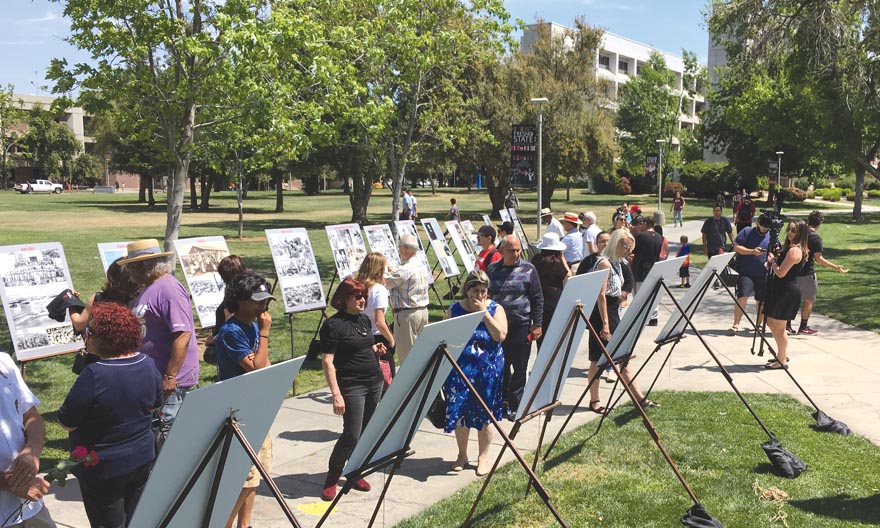
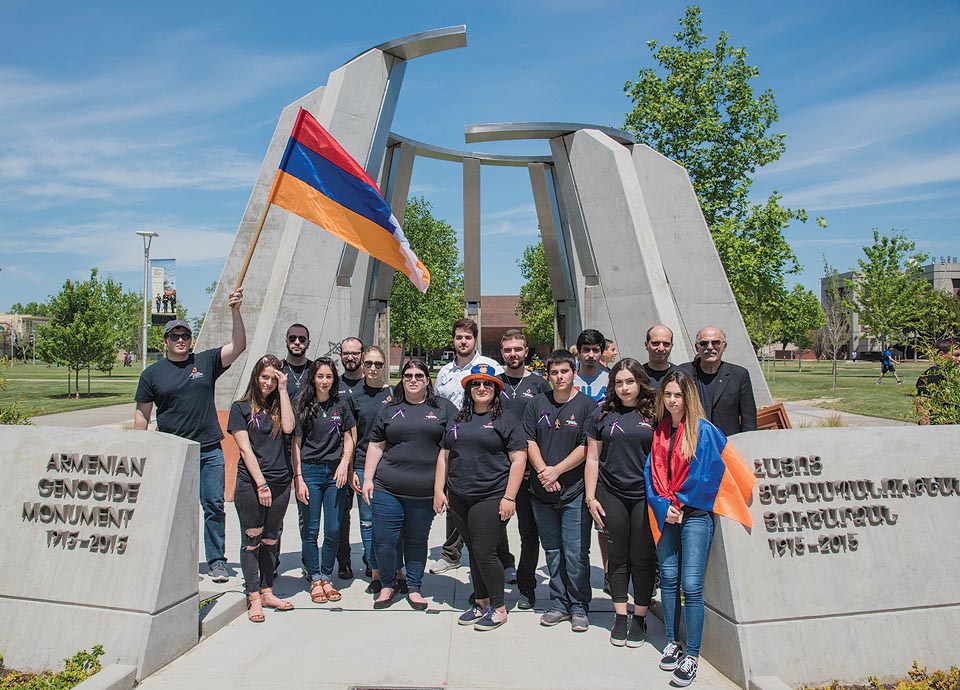
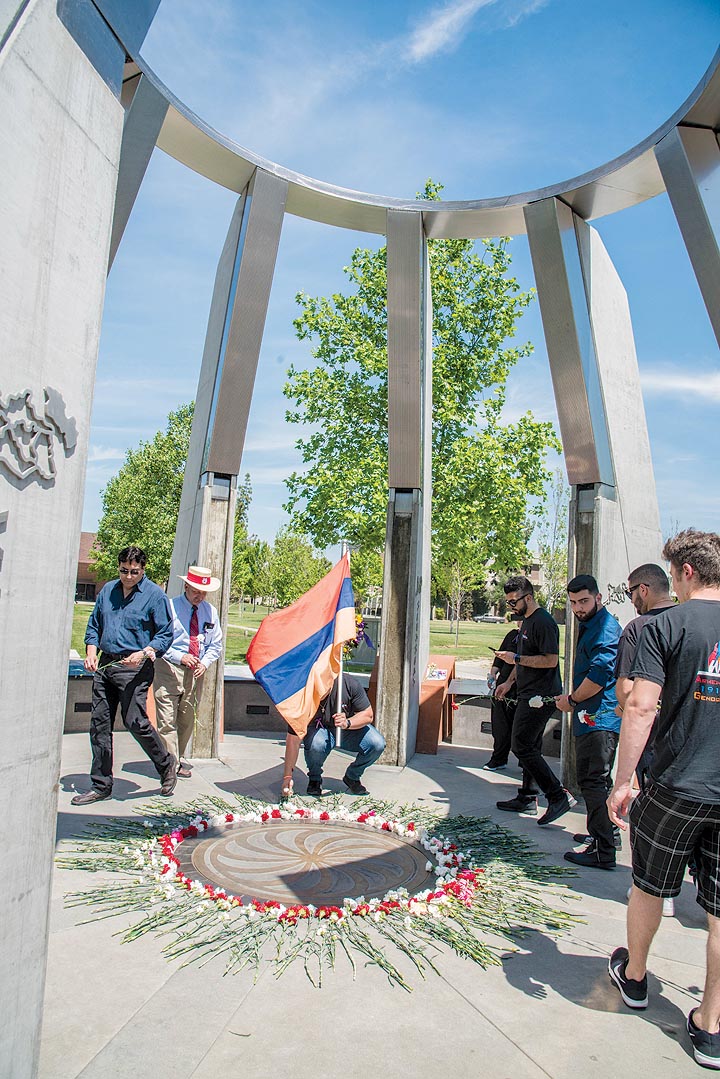
 Hye Sharzhoom Armenian Action
Hye Sharzhoom Armenian Action